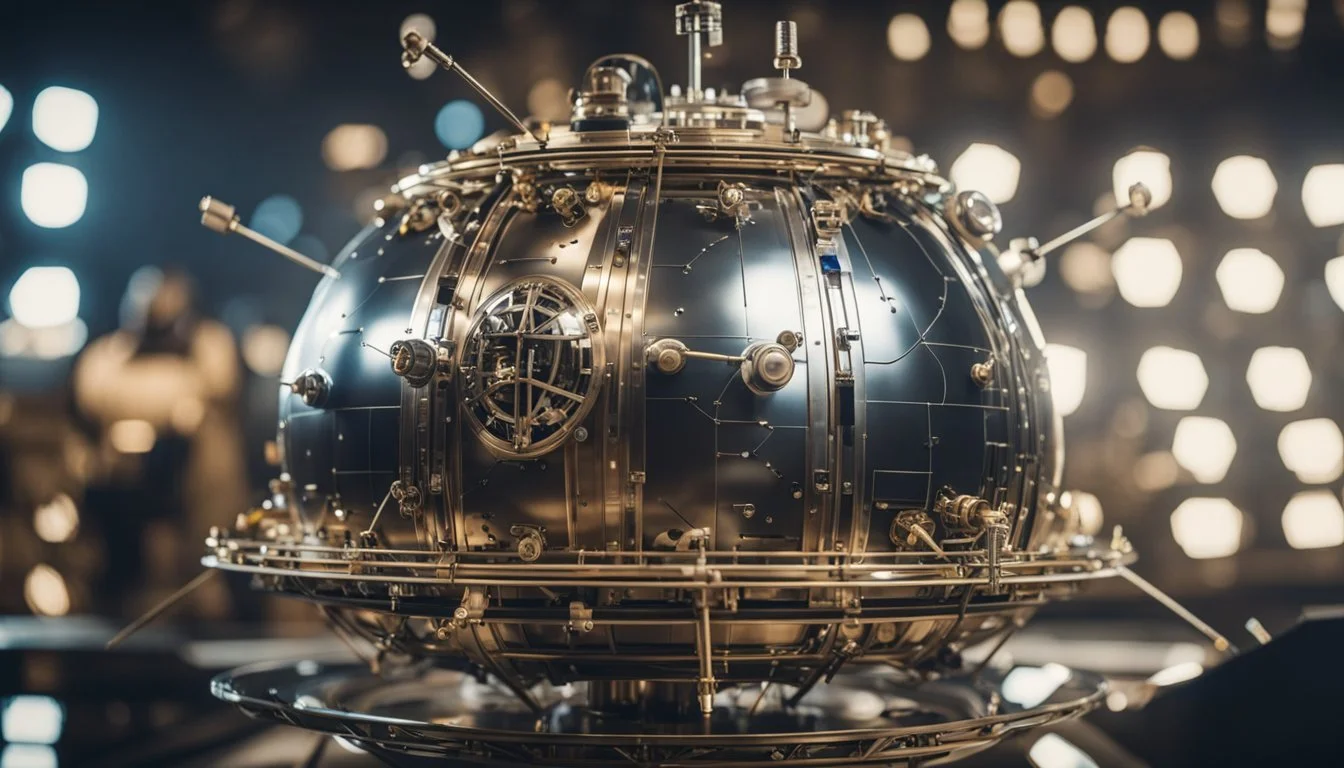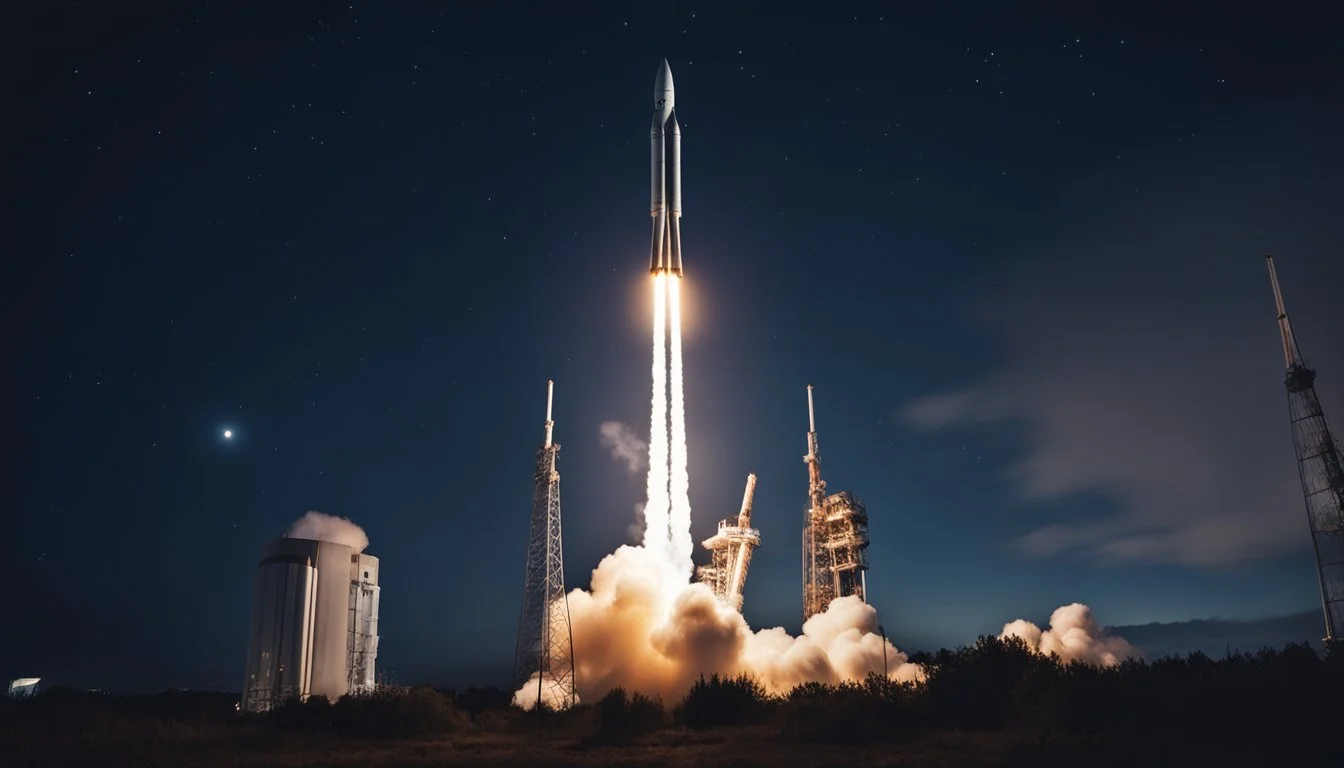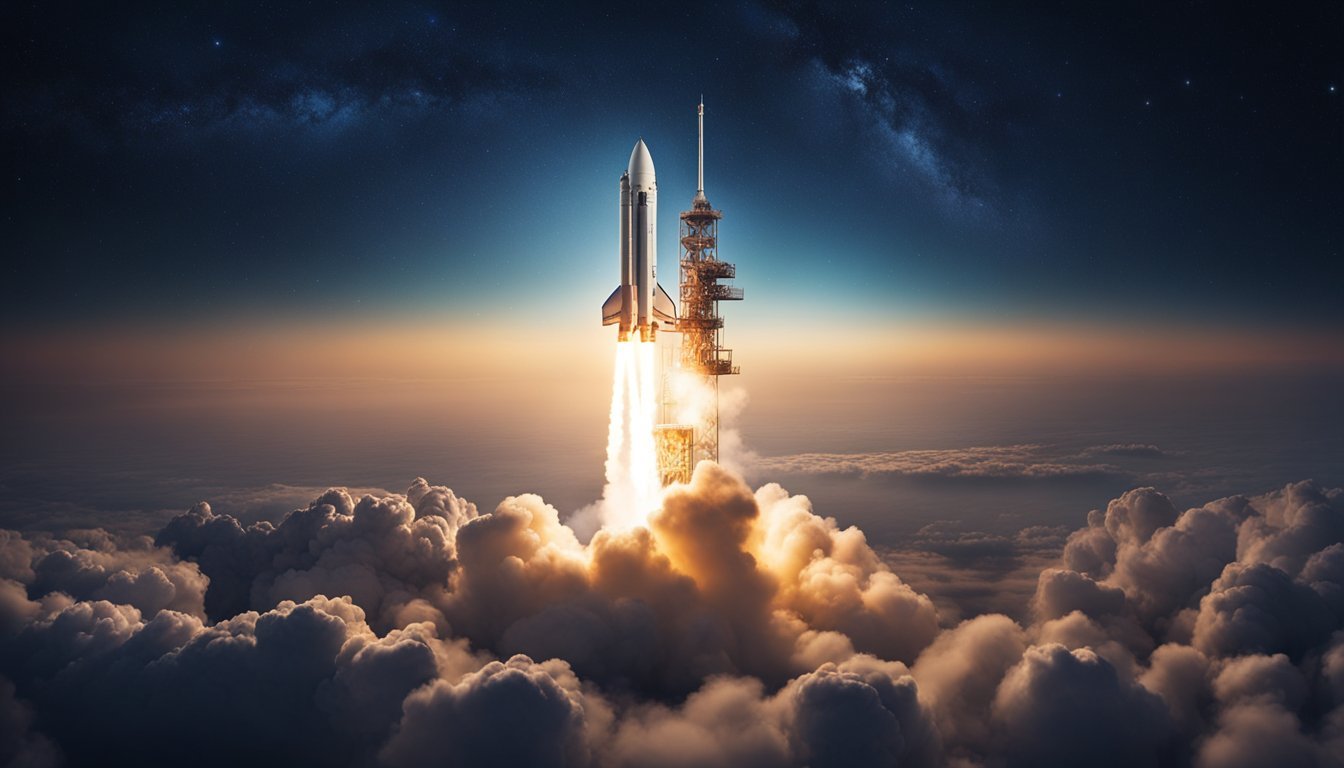8 Space Race Documentaries Featuring Sputnik 1
Cold War's Cosmic Catalyst
The Space Race captivated the world in the mid-20th century as the United States and Soviet Union competed for dominance in spaceflight capabilities. This pivotal period in history began with the launch of Sputnik 1 in 1957, marking the dawn of the Space Age and igniting a fierce rivalry between the two superpowers.
Documentaries offer a compelling way to explore the events, technologies, and personalities that shaped the Space Race. From the early days of rocketry to the historic Apollo missions, these films provide viewers with an in-depth look at one of humanity's greatest adventures. Through archival footage, expert interviews, and dramatic reenactments, audiences can gain a deeper understanding of the scientific breakthroughs and geopolitical tensions that fueled this remarkable era of exploration and discovery.
1) Sputnik Mania (2007)
Sputnik Mania explores the impact of the Soviet Union's launch of Sputnik 1 in 1957. This documentary, directed by David Hoffman, delves into the ensuing space race and arms race between the United States and the USSR.
The film uses archival footage to illustrate the shock and fear that gripped America following Sputnik's launch. It showcases how this event spurred significant advancements in science and technology education across the United States.
Hoffman's documentary also examines the political and cultural implications of Sputnik. It highlights how the satellite's launch challenged American technological superiority and sparked a renewed focus on scientific innovation.
Sputnik Mania provides insights into the early days of the space race, offering a compelling look at a pivotal moment in Cold War history. The film demonstrates how a single event can dramatically shift national priorities and global dynamics.
More information on Sputnik Mania
2) Cold War Tech War: Russia's Sputnik Challenge
The launch of Sputnik 1 by the Soviet Union in 1957 shocked the United States and intensified the Cold War technology race. This small satellite marked the beginning of the Space Age and demonstrated Soviet scientific prowess.
Sputnik's success spurred the U.S. to accelerate its own space program. President Eisenhower responded by creating NASA and increasing funding for science education.
The Space Race became a proxy for ideological competition between capitalism and communism. Both superpowers sought to prove the superiority of their political and economic systems through technological achievements.
Sputnik's launch raised fears about potential Soviet military capabilities, particularly regarding intercontinental ballistic missiles. This concern drove further advancements in rocket technology on both sides.
The Space Race led to rapid innovations in fields like computing, materials science, and telecommunications. Many of these developments later found civilian applications, shaping modern technology.
While Sputnik gave the Soviets an early lead, the U.S. eventually surpassed them. The 1969 Moon landing marked the culmination of American efforts to regain technological dominance during the Cold War.
3) Sputnik: The Satellite that Changed the World
Sputnik 1, launched by the Soviet Union on October 4, 1957, marked the beginning of the Space Age. This small satellite, about the size of a beach ball, orbited Earth every 98 minutes.
The launch of Sputnik 1 sent shockwaves through the United States and ignited the space race between the US and USSR. It demonstrated the Soviet Union's technological capabilities and raised concerns about national security.
This historic event is explored in the documentary "Sputnik: The Satellite that Changed the World" (2017). The film examines the impact of Sputnik's launch on global politics, science, and culture.
The documentary uses archival footage and interviews with experts to tell the story of Sputnik's development and its far-reaching consequences. It highlights how this single event spurred significant advancements in space technology and exploration.
"Sputnik: The Satellite that Changed the World" provides insights into the scientific achievements and political tensions that defined the early years of the space race. It offers a comprehensive look at a pivotal moment in history that continues to influence space exploration today.
4) When We Left Earth: The NASA Missions (2008)
"When We Left Earth: The NASA Missions" is a comprehensive documentary series that chronicles NASA's space exploration efforts. The six-episode miniseries aired on the Discovery Channel in 2008, offering viewers a detailed look at American human spaceflight.
The series covers major NASA programs from Mercury to the Space Shuttle. It features interviews with astronauts and engineers who participated in these historic missions, providing first-hand accounts of their experiences.
Narrated by actor Gary Sinise, the documentary uses newly remastered footage from NASA's archives. This high-definition footage brings the early days of space exploration to life, allowing viewers to witness iconic moments in stunning clarity.
"When We Left Earth" highlights key milestones in space history. These include John Glenn's orbital flight, the Apollo moon landings, and the development of the Space Shuttle program.
The series also addresses setbacks faced by NASA, such as the Apollo 1 fire. It shows how the agency overcame these challenges to achieve its ambitious goals in space exploration.
5) The Right Stuff
"The Right Stuff" (1983) is a cinematic adaptation of Tom Wolfe's 1979 book. The film chronicles the early years of the U.S. space program, focusing on test pilots and the Mercury Seven astronauts.
Director Philip Kaufman brings to life the intense competition and camaraderie among the pilots. The movie showcases their daring exploits as they push the boundaries of flight and space exploration.
The stellar cast includes Sam Shepard, Scott Glenn, Ed Harris, and Dennis Quaid. Their performances capture the bravery and determination of the men who risked their lives to advance American spaceflight.
"The Right Stuff" explores the personal and professional challenges faced by the astronauts and their families. It delves into the pressures of media attention and national expectations during the Space Race.
The film's blend of historical accuracy and dramatic storytelling earned it critical acclaim. It received eight Academy Award nominations and won four, including Best Sound Effects Editing and Best Film Editing.
6) Journey to the Stars
"Journey to the Stars" (2009) takes viewers on a mesmerizing tour of the cosmos. This documentary explores the life cycles of stars, from their birth in massive clouds of gas and dust to their spectacular deaths.
Narrated by Whoopi Goldberg, the film uses cutting-edge scientific visualizations to bring distant celestial phenomena to life. It showcases the latest discoveries about our sun and other stars in the universe.
The documentary delves into the formation of elements within stars and how they spread throughout space. It explains how these elements eventually form planets and even contribute to life as we know it.
"Journey to the Stars" offers a captivating look at humanity's place in the cosmic story. It connects our existence to the grand cycles of stellar evolution playing out across the galaxy.
7) Race to Space
"Race to Space" (2001) chronicles the early years of the Space Race between the United States and Soviet Union. The documentary focuses on the pivotal events following the launch of Sputnik 1 in 1957.
Viewers are taken through the rapid technological advancements and political tensions that defined this era. The film explores how Sputnik's success spurred the creation of NASA and accelerated American efforts to catch up in space exploration.
Key figures like Wernher von Braun and Sergei Korolev are featured, highlighting their roles in developing rocket technology. The documentary also examines the impact of early space missions on public perception and national pride.
"Race to Space" provides insight into the scientific challenges and human drama behind the push to achieve spaceflight. It showcases archival footage and interviews with astronauts, engineers, and historians to bring this historic period to life.
The film culminates with the Apollo program and the race to land humans on the Moon. It offers a comprehensive look at how competition in space shaped global politics and scientific progress during the Cold War.
More information on "Race to Space" (IMDb)
8) The First Orbit
"The First Orbit" (2011) is a unique documentary that recreates Yuri Gagarin's pioneering space flight. The film combines original audio recordings with new footage shot from the International Space Station.
Director Christopher Riley meticulously matched the ISS's orbit to Gagarin's flight path. This allows viewers to experience the historic journey as if they were alongside the cosmonaut.
The documentary showcases Earth's beauty from space, just as Gagarin saw it in 1961. It features stunning views of our planet's landscapes, oceans, and atmosphere.
Composer Philip Sheppard's original score enhances the visual experience. The music complements the awe-inspiring imagery and Gagarin's recorded observations.
"The First Orbit" offers a fresh perspective on a pivotal moment in space exploration history. It brings Gagarin's groundbreaking achievement to life for modern audiences.
More information on "The First Orbit"
Historical Significance of Sputnik 1
Sputnik 1's launch on October 4, 1957, marked a pivotal moment in human history. It sparked global competition and scientific advancements that continue to shape our world today.
The Dawn of the Space Age
Sputnik 1 became the first artificial satellite to orbit Earth, ushering in the Space Age. The Soviet Union's success with this 58 cm diameter, 83.6 kg spherical satellite demonstrated humanity's ability to reach beyond our planet.
The launch utilized a modified R-7 intercontinental ballistic missile, showcasing the dual potential of rocket technology. Sputnik 1 completed an orbit every 98 minutes, emitting radio signals detectable from Earth.
This achievement prompted rapid advancements in space technology worldwide. It inspired a generation of scientists and engineers to push the boundaries of human knowledge and exploration.
Impact on Global Politics
Sputnik 1's launch intensified Cold War tensions and ignited the Space Race between the United States and Soviet Union. The successful orbital placement of a Soviet satellite raised concerns about potential military applications of space technology.
The event spurred significant changes in U.S. science and technology policies. It led to increased funding for space research and education, resulting in the creation of NASA in 1958.
Sputnik 1 also influenced international relations, demonstrating the Soviet Union's technological capabilities to a global audience. This shift in perceived power dynamics had far-reaching effects on diplomacy and military strategy during the Cold War era.
Technological Achievements of Sputnik 1
Sputnik 1 marked a groundbreaking leap in space technology and satellite engineering. Its successful launch and operation demonstrated several key innovations that laid the foundation for future space exploration.
Pioneering Satellite Design
Sputnik 1's design was remarkably simple yet effective. The satellite was a polished metal sphere, 58 cm in diameter and weighing 83.6 kg. Its spherical shape minimized air resistance and simplified attitude control.
The outer shell was made of highly polished aluminum-magnesium-titanium alloy, which helped regulate internal temperature. Four external radio antennas were deployed after launch.
Sputnik 1 carried two radio transmitters operating at different frequencies. These transmitters allowed scientists to study radio signal propagation through the atmosphere.
Innovations in Communication
Sputnik 1 revolutionized space communication. Its radio signals were detectable by amateur radio operators worldwide, making it the first truly global space event.
The satellite's beeping transmissions provided valuable data on ionospheric density. This information was crucial for understanding radio wave propagation and developing future communication satellites.
Sputnik 1's radio system operated for 21 days until its batteries died. During this time, it transmitted telemetry data on temperature and pressure inside the satellite.
The success of Sputnik 1's communication system paved the way for more advanced satellite communication technologies used today in global positioning, weather forecasting, and telecommunications.



